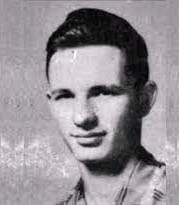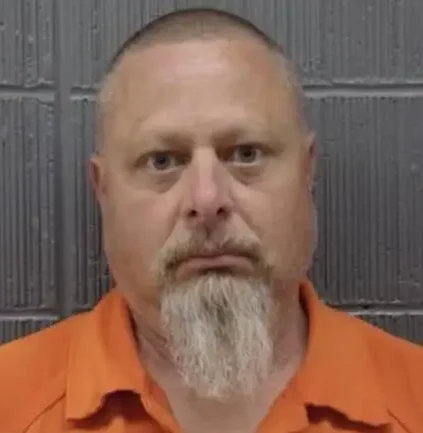
Theodore Robert Cowell was born in Burlington, Vermont on 24th November 1946. His mother Louise was unmarried, and her pregnancy was the result of a fling with an alleged sailor, who abandoned her. In 1946, it was not considered acceptable to bear a child out of wedlock, and Louise opted to give birth in the Elizabeth Lund Home for unwed mothers. The delivery was uneventful, and Ted was a normal healthy baby. Soon after birth, Louise returned to her family in Philadelphia, who despite the stigma at that time, welcomed her and her baby back into their home. However, it’s thought that for a period of time during his childhood Ted believed his grandparents were his mother and father and his mother was his sister. It was also thought that although Ted spoke fondly of his grandfather, it was rumored that there was a far darker side to him, a side that the vulnerable young Ted was exposed to from an early age. His grandfather had a violent temper that often culminated in physical violence and was known to be abusive to animals. He also had a disturbing collection of pornography that young Ted had discovered and viewed from a very young age.

Bundy with his grandfather.
Family members remember that Ted displayed some very unusual behaviors even as a young child. On one occasion when he was just three years old, his aunt awoke to find Ted had placed kitchen knives all around her body as she slept. There is a caveat which concern Bundy’s incarceration when family members said those strange things about him. In 1949, Ted’s mother changed her son’s surname from Cowell to Nelson. Many years later Louise revealed the reason for this was that she intended on moving out of the family home to live with her Uncle Jack in Washington. His surname was also Cowell, so to protect her son from ridicule, she decided to change it. In 1951, Louise and Ted moved in with Uncle Jack, and the boy became quite close to him. It wasn’t long before Louise met and married John Bundy, a war veteran and cook. He soon adopted Ted, who took his now infamous surname. After a brief move to the country, the family later settled in Tacoma, where Bundy spent the rest of his childhood. His mother union with John bore a further four children, two daughters and two sons. Ted had a good relationship with all of his siblings but was closest to his youngest brother Richard and his mother. It was said that he didn’t appreciate his stepfather.
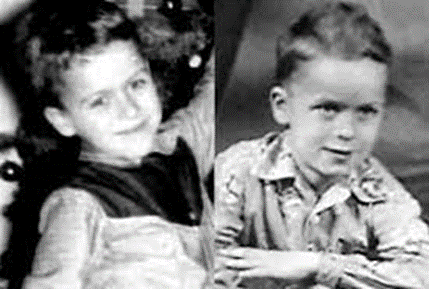
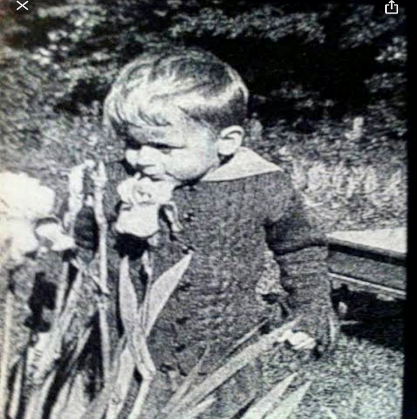
Ted learned the truth about his illegitimate birth but we don’t know when he saw that his father was unknown. Ted’s years in school were fairly uneventful, although from a very young age he had an unhealthy interest in sex, according to his words in his last interview. As he progressed to high school, he became somewhat of a loner, who had just a couple of friends. He stuttered allegedly and sometimes it might point out towards trauma. He found it hard to adapt and was becoming increasingly isolated and out of place in the society he lived in. However, despite being socially withdrawn with few friends, he was never short of female admirers. Although much to their displeasure, he never dated through high school.

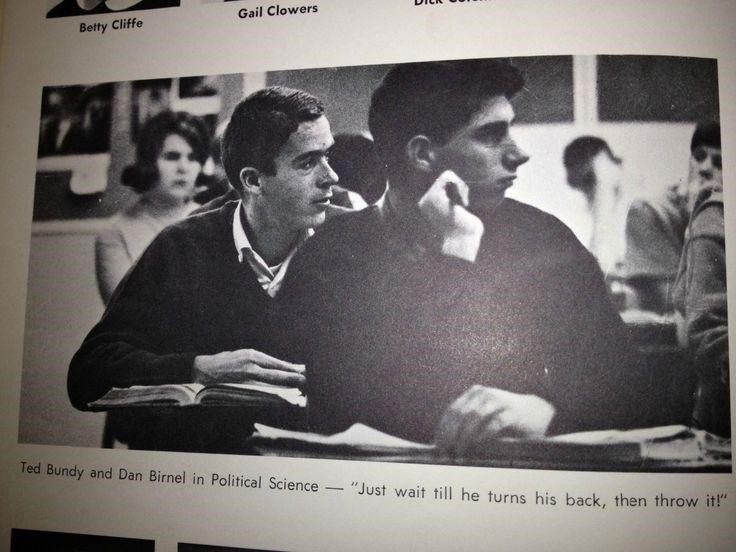
As he entered adulthood, he became more and more attracted to the opposite sex. He was good-looking, charming, and intelligent, but this outer shell was hiding an increasingly tortured mind, and Bundy saw himself as a loser and an outsider. During his high school years, Bundy was a keen sportsman, and although his achievements were limited, he did become an accomplished skier. He also became an accomplished thief, and as money was tight in the family, he would regularly steal things he needed. In 1965, Bundy graduated from high school and enrolled at the University of Puget Sound in Tacoma, but he became bored and lonely and the following year enrolled at the University of Washington in Seattle. It was here that he met the girl of his dreams or as he stated, everlasting love. Her name was kept secret, so we don’t know whether it was Stephanie or Diane. She was allegedly slightly older than Bundy, and of a much higher social standing than him, but despite this, they became an item. Bundy was infatuated with her and was desperate to impress her, but inwardly he felt he was not worthy of her, although he had this remarkable ability to hide his inner turmoil. She ended the relationship in 1968, and this is when Bundy’s already fractured mind began to unravel.
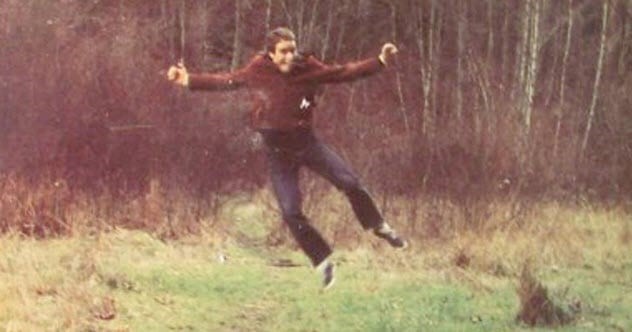
He decided to leave Seattle and university, telling family members the memories were too painful, and he needed to get away. Bundy went Washington State in the winter of 1968 and headed to San Francisco before flying to Denver to ski and then Philadelphia to visit family. He later return to Seattle. On his return to Seattle, Bundy worked a couple of jobs, first in a Safeway store, then in a hotel washing pots, a job he left under a cloud due to allegations of stealing. Then after a chance meeting with an old friend, he started working for Art Fletcher, a city councilman who was campaigning to be nominated for the Republican Lieutenant Governor. He worked hard and was liked by everyone. However, similar to other stages in his life, he found it difficult to form any real friendships. When Fletcher lost his bid to be lieutenant governor, it was a crushing blow to Bundy, who had aspirations of becoming more involved in political life.
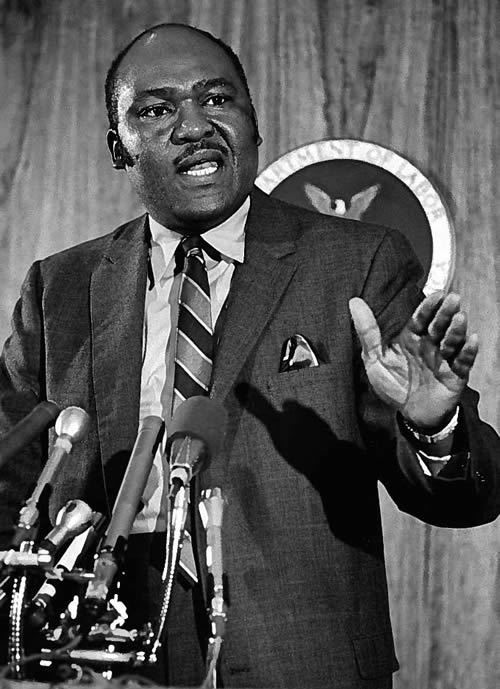
By now Bundy’s inner monster was beginning to surface, and he had become a prolific peeping Tom, creeping around at night spying on unsuspecting women. He also had an extreme obsession with violent pornography. After searching his flat, FBI agent said that based on things they found, he should’ve been a pedophile, materials they found were about schoolgirls.
Dark thoughts in his mind were out of control, and he was getting increasingly drawn to act out his desire to abduct and rape a woman. It’s uncertain whether he did murder any woman in Philadelphia. Many believe he did. Bundy rented a small apartment in Seattle. He worked at a sawmill and then as a messenger. In the Autumn of 1969, he met a woman, who was to remain in his life for the next six years. Her name was Liz K. and although Bundy craved a normal relationship and Liz became very important to him, throughout their time together he secretly dated many other women. Liz had a younger daughter from her previous marriage and Bundy soon embraced his new family and thought he had found the normalness he craved.
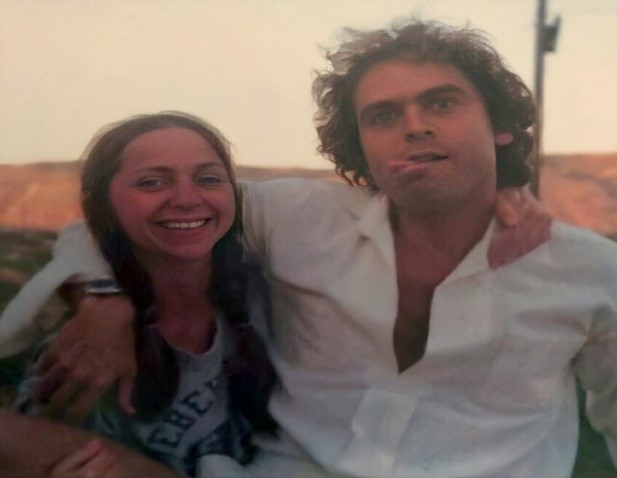

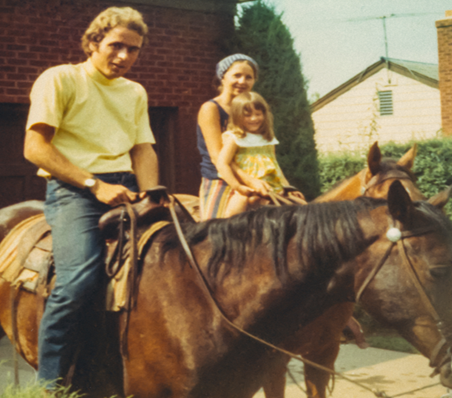
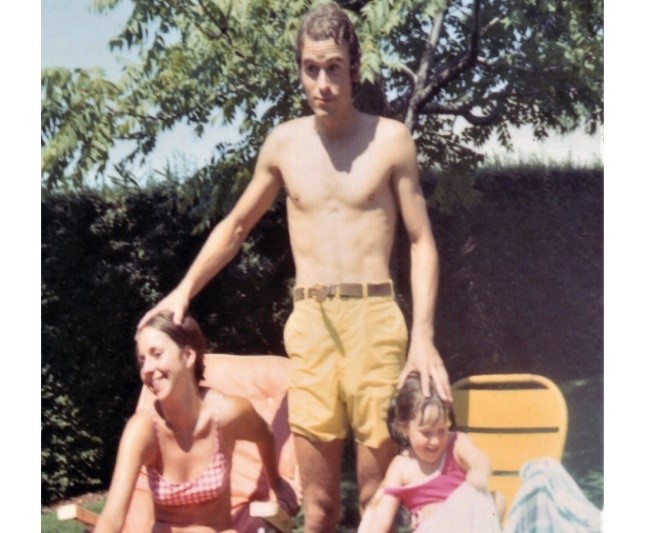
However, something stronger was still festering in his psychopathic mind, and despite this new found connection, these heinous thoughts were still very much alive.
Liz helped to fund his return to university. In the spring of 1970 Bundy again enrolled at the University of Washington and ironically declared his major in psychology. He also started working as a delivery driver for medical supplies, some of which he would steal and use in a grotesque way on his murder victims. Over the next few years with Liz by his side Ted transformed outwardly from to a confident, academically successful man. When in 1973 he was finally accepted into law school, he again caught the attention of his first love Stephanie Brooks or Diane, who suddenly had a renew interest in a man who had cruelly discarded. The two started to see each other again. He was still in a stabile relationship with a Liz. He asked her to marry him, an offer she willingly accepted. He just dumped her. Stop calling her and responding to her calls. He carried on his life with Liz. In 1971 Bundy took a job as a telephone counselor at the Seattle Crisis Clinic, where he met crime writer Ann Rule, who went on to write a book about her co-worker ‘’The Stranger Beside Me’’. In 1972, Bundy graduated with a degree in psychology. He then took a job at the Harborview Medical Center (Harborview Mental Health Center). This job didn’t work out, as he was not considered capable of being emotionally responsive to the needs of the patients, allegedly. He also had a brief relationship with one of his co-workers, a woman it would later transpire had a lucky escape, as during their outings, he used to drive her to remote rural locations. It was also one of the few girls that Bundy admitted to Liz in their brief separation. Couple were reunited.
Ted became part of the team to re-elect governor Dan Evans. A job Bundy reveled in, as he was required to gain as much information as possible from Evans’ opponent Albert Rosellini. This sometimes involved wearing a disguise, something Bundy became renowned for during his murder spree. This new venture into politics saw Bundy rub shoulders with some of the most prominent figures in Washington State Politics.

Still, Bundy’s nocturnal behavior was increasing and he would regularly roam the back streets at all hours of the night. Liz was also noticing a change in the man she adored. On one occasion she discovered surgical gloves in his pocket.
In 1973 after a brief and unsuccessful stint at the University of Puget Sound in Washington, Bundy made the decision to move to Utah the following summer and enter the University of Utah Law School. By the end of 1973 and with The New Year looming, Bundy’s mind was focused and set, and he was about to ignite a wave of terror unlike any other as he finally unleashed his sadistic thoughts and made them a reality, meaning no women within his reach were safe.
In January 1974 during one of his night stalks, Bundy entered the apartment of 18-year-old University of Washington student Karen Sparks. He bludgeoned the sleeping woman using a metal rod from under her bed frame. He then carried out a horrific sexual assault on the unconscious Karen, causing appalling internal injuries. Remarkably she survived despite being unconscious for several days, but she was left with permanent disabilities.
On 31st of January 1974, 21-year-old student Lynda Anne Healy was out enjoying a drink with friends at a local nightclub popular with students. She went home at her room in the basement and nobody noticed, heard anything. She didn’t turn up for work. They checked her room, but there was no sign of Lynda. After one of her roommates received three silent phone calls, she checked her room again and found blood stains were found and some clothes were missing.
On the evening of March 12, 1974 Donna Gail Manson, a 19-year-old student from the Evergreen State College in Olympia, left her dormitory with the intention of attending a jazz concert held on campus. Sadly, she never made it. She was unpredictable and unreliable student who liked to party and often didn’t attend class. Her fondness of alcohol and marijuana would often make her vulnerable and she was known to hitchhike and stay out all night. She was reported missing 7 days later.
Just over a month later, Kathleen Clara D’Olivo had an unnerving encounter with a stranger in the carpark of the Central State Washington College where she was a student. She helped Bundy to take books to his car, but realized she was in danger and ran away. 18-year-old fellow student Susan Elaine Rancourt who disappeared on her way back from her dorm on the same night in the same area that Kathleen had encountered Bundy. It transpired later that another girl had a similar encounter with a stranger wearing a sling and dropping books. Although it’s unclear if it was the same night, it was the same area and most definitely the same person.
The local press and police department were starting to take notice. A pattern was emerging.
People started to notice a change in Bundy’s personality. His long partner Liz also noted his behavior towards her was getting more and more perverse. As she wanted no part of it, he became moody and preoccupied. She became convinced he had met another woman. He also started skipping work and missing appointments.
Bundy went to Oregon.
6th of May 1974, 21-year-old Oregon State University student Roberta Parks had a troubling few days but that one was fatal. Her father had a heart attack and she had serious thoughts about what future she had with her long-term boyfriend, so it wasn’t unusual for her to go for walks alone at night.
On the night of May 31, 1974 Bundy spent evening with Liz, but he was anxious to leave. 22-year-old Brenda Carol Ball was enjoying evening drinking with friends. When she left she encountered Bundy and was brutally murdered and abused. Due to her life style she wasn’t reported missing until June 17th.
In meanwhile Bundy struck again. Georgann Hawkins, 18-year-old first year student, popular and hard-working, at the University of Washington. In the early hours of June 11th Hawkins had just dropped in to visit her boyfriend. Unlike Bundy’s other victims, she was well aware of the dangers of walking at night alone and rarely did so. She encountered apparently disabled man who had a leg brace and crutches and struggling with a briefcase. She was killed, subject to a sadistic sexual assault before and after death. Bundy had left evidence. He’d struck her with such force before abducting her that she lost a shoe and both her earrings flew out. He retrieved these items calmly the next morning.
The pressure was mounting on the authorities to act, and for Bundy being the talk of the town excited him.
It was a sunny day on Sunday, July 14, 1974, and people were on the beach at Lake Sammamish State Park in Issaquah. 23-year-old visitor, probation officer, Janice Ann Ott. Visitors noticed attractive polite young man, in a white tennis outfit and his arm in a sling meandering between sunbathers apparently looking for someone. Witnesses heard that he introduced himself as Ted. He sat beside Janice. He made his way back down to the crowds and went on the prowl again. 18-year-old Denise Naslund. She spoke to a man with a sling on an arm and that was the last time anyone seen her.
Police now had a description of their suspect, as well as the possible vehicle he drove and the name Ted.
Just a few weeks after at the beginning of September 1974, Bundy moved to Salt Lake City to start at the University of Utah Law School. Liz didn’t move with him. He dated many women but still maintaining contact with Liz. He also dated Carole Ann Boone, a lady he met while working at Washington State Department of Emergency Services. Bundy actually knew how police worked, what they were looking for, because for a brief time he worked with law enforcement. He also wrote about preventing rape. When he was with friends and they were speaking about that ‘maniac’, he told: “You can kill someone and left body in one state, clothes in other, documents in third… They can never catch you.” Police Departments in different states in the US didn’t cooperate, shared information and he knew it.
He took his next victim on the drive to his new home in Utah. He stopped and called Liz and about 30 min later he spotted a hitchhiker. This poor lady was never identified and her remains were never recovered.
The net was closing in, and just five days after Bundy arrived in Utah, two of his victims bodies were found, those of Denise Naslund and Janice Ott along with a third set of unidentified human bones. Their remains were discovered by a hunter in a secluded area less than 10 miles from Sammamish State Park. The discoveries confirmed the worst fears of the police and the community. The missing girls were now murder victims. The man in charge of solving these heinous crimes was Detective Robert Keppel.
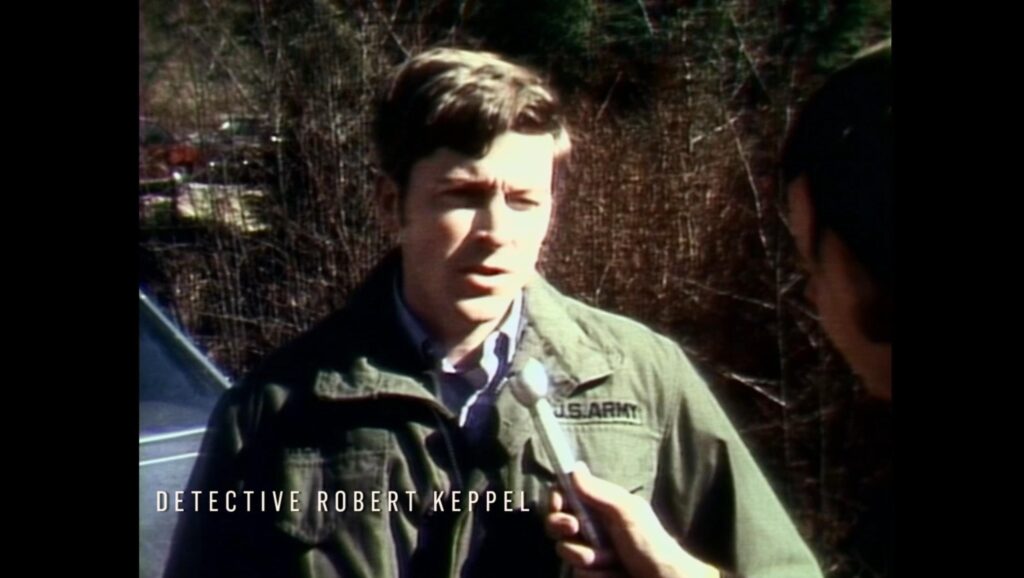
Between the 20th of September and the 8th of November 1974 Bundy abducted and murdered at least four women. The first known murder during this period was on October 2nd when Bundy abducted 16-year-old Nancy Wilcox. Her remains have never been found. His next victim was 17-year-old Melissa Smith, who disappeared on October 18th after leaving a pizza parlor. Melissa was the daughter of a local police chief, and her body was found 9 days after her abduction. Then, 17-year-old Lehi Aime also went missing and her body was found. Both women had been beaten and subjected to vile rapes before being strangled with nylon stockings. However, unlike some of his other victims, it was thought likely Bundy kept these two alive, most likely unconscious and used their lifeless bodies as playthings for his own sexual gratification, possibly taking them back to his apartment until he finally finished them off and dumped their bodies. Bundy seemed to be pushing the boundaries even further in his relentless pursuit of his euphoria, and it was thought that both Lehi and Melissa had been washed and had makeup and nail polish applied to them by Bundy either pre or post-mortem.
The final known victim during this six-week killing spree was 17-year-old Debra Kent, a student at Viewmont High School in Bountiful. However, before Debra met her horrific end, Bundy had unsuccessfully tried to abduct another girl 18-year-old telephone operator Carol DaRonch. This time Bundy posed as Officer Roseland of the Murray Police Department. After luring Carol into his Volkswagen, she realized she was in danger and put up a strong fight. She managed to escape when Bundy bungled his attempt at handcuffing her. After the incident Ted was frustrated and in predatory mode and there was only one way to alleviate this. He immediately sought another victim. As he headed towards Bountiful, he remembered that Viewmont High School was hosting a musical. He saw this as a perfect opportunity. He parked his Volkswagen in the school parking lot, and scanned the area before making the brazen decision to enter the school auditorium. His presence didn’t go unnoticed, and many recall the good-looking stranger milling among them that night. The concert was overrunning, and Debra Kent who was sat with her family had to leave to pick up her brother. As soon as Bundy spotted her, he made his move. As she walked to her car, he pounced and by unknown means rendered Debra unconscious before carrying her to his car. Then in order to divert suspicion from himself, he returned to the auditorium. In the audience that night was Susan Curtis, who would also become one of Bundy’s victims. As the Kent family filtered out of the performance that night, they could not have realized that their lives would never be the same again and that their precious daughter was now far away bundled into Bundy’s Volkswagen with untold horror waiting for her. Debra’s body was never recovered.
Outside the auditorium investigators found a key that unlocked the handcuffs removed from Carol DaRonch wrist.
Back in Seattle Bundy’s girlfriend, Liz read an article about the young women that were disappearing in the towns surrounding Salt Lake City. When details of the Sammamish Lake murders were released Liz contacted King County Police and relayed her suspicions about the man she loved. But at that time no credible evidence linked him to the Utah crimes or the Sammamish Lake incidents. At the start of the year, Bundy briefly returned to Seattle to spend the week with Liz. But despite her suspicions, she made no reference to the killings or the fact that she had now reported him to police on three separate occasions.
He had created a reign of terror throughout the state, and it was time to move on. He chose Colorado. After all, he was an accomplished skier, and he would blend in nicely with the community there a community who would only barely be aware of the killings in Washington and Utah. In January 1975, 23-year-old nurse Caryn Aileen Campbell arrived at Wildwood Inn in Snowmass Village near Aspen, Colorado with her boyfriend and his children. On the evening of 12th January Caryn left the lobby to go to her room. Her boyfriend and the children stayed downstairs. She took the elevator to her second-floor room, but she never made. As she stepped out of the elevator Bundy was waiting. Caryn’s frozen, naked, partially eaten body was found over a month later. She had extensive injuries to her head, face, and neck, consistent with being struck with a blunt instrument.
For the next couple of months, Bundy returned to his studies in Utah, although as usual his attendance was irregular.
For the police an important discovery was made, when on March 1 1975, two forestry students stumble upon a macabre scene on the slopes of Taylor Mountain. After police did an extensive search of the area the full horror of Bundy’s crimes emerged. The heads of Lynda Healy, Kathy Parks, Susan Rancourt and Brenda Ball were discovered. All of the upper teeth of Kathy Parks were missing, and Susan Rancourt’s hair was found detached from her head, and part of Brenda Ball’s skull was missing. These discoveries were horrific and for the families of the missing quashed any hope of finding their loved ones alive. It was also apparent that Bundy had used this place as a dumping ground for heads and in some cases had traveled a considerable distance to this location. The question was where were the rest of the remains? Only Bundy knew that, and he was not in any hurry to reveal it.
On March the 14th Bundy left his apartment in Utah and again headed to Colorado. The calendar had ticked over to the 15th, when Bundy arrived in his Volkswagen at the small village of Vail in Colorado. That evening 26-year-old part-time ski instructor Julie Cunningham left her apartment to take the short walk to a nearby tavern where she was due to meet friends. On route she encountered a man walking with crutches and struggling with his ski equipment. He asked the young lady for help getting to his car. Julie willingly agreed. She was never seen alive again.
Bundy bludgeoned her and took her to a secluded area where he sexually assaulted her and dumped her naked body under a tree. Bundy later admitted he drove back to the dead body on more than one occasion in the following days and committed necrophilia before finally burying her. Her body was never found.
Bundy was on the road again, and on April 6th 24-year-old Denise Oliverson disappeared near the Utah-Colorado border in Grand Junction. Denise had an argument with her boyfriend and had decided to ride her yellow bike over to her parents’ house. Somewhere on route Bundy abducted her, killed her, and dumped her body in the Colorado River. It’s unclear if Bundy was disrupted or thought it too risky as it was unusual for him to dump a body this way, as he liked to return to the corpse later. Her body was never recovered but her bike and sandals were.
On his return to Salt Lake City, Bundy remembered to send Liz flowers for her 30th Birthday, although this thoughtful gesture did nothing to alleviate the growing fear and confusion in Liz’s mind that her lover was potentially a sadistic serial killer. However, despite reporting her concerns again to the police, they seemed no closer to apprehending him even though he was on their list of 100 suspects. The four states that Bundy had now struck in were started to compare notes and a pattern was emerging. It was their belief that it was possible that a single perpetrator was responsible for all of the known murders and disappearances.
At the beginning of May Ted was on the hunt again. This time he headed North towards Idaho. By his standards, quite a short run of around 160 miles. He checked into a Holiday Inn, close to Idaho State University. For the first time since his killing spree, he was actually confronted by a man when he was caught entering a female dormitory. When he was unable to confirm his identity, he was asked to leave. That first night in this area was a frustrating one for Bundy, and he returned to his hotel room dejected at his inability to track down a victim. This was very bad news for 12-year-old Lynette Culver, as the next day in a complete change of tactics for Bundy, he got into his Volkswagen and started prowling the streets when he came across a group of school children on lunch break. Bundy parked his car close to the school and got into a conversation with Lynette, who for whatever reason got into the passenger seat of his car. Bundy then drove her back to the Holiday Inn and drowned her in the bathtub. He was now not only an unrelenting killer of women he was also a pedophile and child murderer. Bundy dumped her body in a river north of area the next day.
Bundy returned to his life in Utah, and in the middle of that month he had visitor from his old job in Washington State. These included Carole Ann Boone. They all stayed in Bundy’s apartment for the week. A few weeks after they left, Bundy made a surprise visit to Liz, who was as usual delighted to see him. It’s thought they even discussed marriage even though Liz still had deep-seated fears that he was involved in the killings. Similarly, Bundy never disclosed the fact that he was still having an ongoing relationship with Carole Boone. By the end of June, he craved another dead body. As with his previous victim he chose a child.
Her name was Susan Curtis, a young girl who had been in the audience the night Bundy abducted Debra Jean Kent from Viewmont High School in Bountiful. On June 27th 15-year-old Susan vanished from the campus of Brigham Young University in Provo. As she walked alone, Bundy emerged from the darkness luring her to her death. Her body has never been recovered.
In the months that followed a young girl from Golden Colorado named Shelley Robertson went missing along with 23-year-old Nancy Baird, who disappeared from her place of work. Although Bundy did not admit to the killing of these two girls, it’s entirely plausible he was responsible as he was known to frequent both these places. Shelly’s decomposed body was found in an old mine shaft 40 miles west of Golden. Nancy Baird has never been located.
In the early hours of August 16 1975, Bundy was parked up smoking weed in his Volkswagen. He had spent the night cruising around. The blinding lights of Sergeant Bob Hayward’s patrol car were about to startle him. In an uncharacteristic lapse of judgment, Bundy decided to take off closely pursued by Hayward. Eventually, Bundy surrendered and prepared himself to go on the charm offensive. This was the moment that Bundy’s murderous world started to implode. For the first time he’d became the hunted rather than the hunter.
Bundy was arrested that night for evading an officer and being in possession of burglary tools. Handcuffs were also found in the boot, which were, in fact, part of his murderous tool kit containing a ski mask, pantyhose, a crowbar, handcuffs, bags, rope, an ice pick, and other items. After being booked Bundy was released on his own recognizance. His murder bag was seized and kept as evidence. This was to be the beginning of the end. By now Bundy had risen to the top of the suspects list. As the various states started talking, all of the dots were starting to join up.
On August 21st, 1975, Bundy was arrested at his home in Utah and taken to the police station. He was questioned at length about the contents of the bag. He claimed that everyone had had those tools in cars. Officers searched his home and found a guide to Colorado ski resorts and a brochure advertising the Viewmont High School play in Bountiful. But nothing sufficiently incriminating to hold him any longer. After photographing his car, he was again released.
Bob in Seattle, Mike Fisher in Aspen and Jerry Thompson in Salt Lake City and now what was once three separate investigations was one. Back then state’s LE didn’t cooperate, didn’t share data and Bundy knew it because he spent time in police helping them and learning about their work. Crucial pieces of evidence were going to seal the deal, and it would come from the one that got away, Carol DaRonch. Shortly after his release, Bundy sold his Volkswagen Beetle to a teenager, but the vehicle was impounded by the police, dismantled and searched. Despite Bundy being obsessive about cleaning the car, they were able to retrieve hair matching samples obtained from Caryn Campbell, Melissa Smith, and Carol DaRonch.
On Oct 2nd 1975, Bundy was put in a lineup and was immediately identified by DaRonch as the man who tried to abduct her. He was also picked out by witnesses from Bountiful who recognized him as the unknown stranger lurking around the Viewmount school auditorium on the night Debra Kent disappeared. Despite there being insufficient evidence to link him to Debra’s murder at the time there was more than enough to charge him for the attempted abduction of DaRonch.
Bundy was arrested and charged but freed on $15,000 bail paid by his parents.
Whilst on bail Bundy was under heavy surveillance, and he returned to Seattle where a lot of his old friends and colleagues believed in his innocence. He also set about wooing Liz back and it succeeded.
In the past she had spoken extensively to the police, in December of that year, it was reported that she would no longer be cooperating with the authorities. Bundy had won her and she now believed he was innocent.
At his trial he was found guilty of the kidnap and assault of DaRonch. The courtroom was packed with not only many of Bundy’s supporters but also members of the families whose daughters had been horrifically murdered. In June 1976 he was sentenced to serve a minimum of one to a maximum of 15 years in the Utah State Prison. Bundy protested his innocence and for the first time he was finally off the streets and locked away. And all the while Keppel, Fisher, and Thompson were tirelessly working. In October 1976 Colorado authorities charged Bundy with Caryn Campbell murder, and in the early hours of a freezing morning on 28th January 1977 Bundy was cuffed and shackled then bundled into an unmarked police car to make the final journey from Utah to Colorado to stand trial.
The ever arrogant Bundy also opted to assist in his own defense an action that Bundy would have been well aware of would give him access to the law library and other special privileges. He obviously forgot famous The US President Abraham Lincoln’s quote ”A person who represents himself has a fool for a client.”
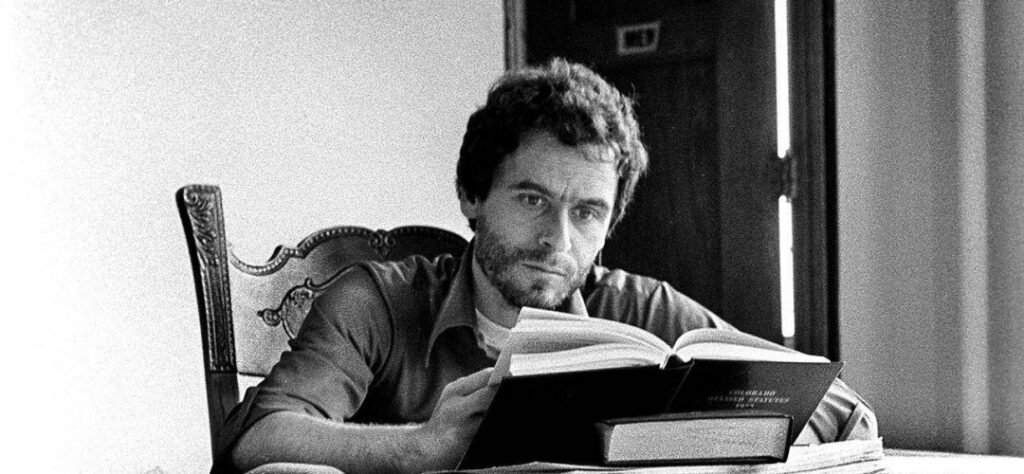
That moment came in June 1977 when Bundy asked to visit the courthouse law library to research his case. He opened a window and jumped from the second floor, spraining his right ankle as he landed, but he was once again free. It didn’t last long as just six days later he was pulled over in a car he had stolen and he was recaptured. Having had a taste of freedom, Bundy was now intent on making another escape bid, and after meticulous planning and help from inmates and visitors, in particular, Carole Ann Boone, he acquired a hacksaw and $500. After losing 35 pounds, he cut a hole in the ceiling of his cell and wriggled through the crawl space. On the night of 30th December 1977 he again successfully escaped. It was not noticed until 17 hours later by which time he had made it to Chicago. Despite admitting later that his initial intention was to get a job and dissolve undetected into society, the urge to kill was too strong. After making his way to Florida less than a week later on January 15th, 1978 Bundy went on the rampage.
On 15th January, 1978 he entered Florida State University’s Chi Omega Sorority house through a rear door with a faulty lock. He then proceeded to bludgeon 21-year-old Margaret Bowman, before choking her with a nylon stocking. He then entered the bedroom of 20-year-old Lisa Levy and beat her unconscious then sexually assaulted her. In an adjoining bedroom he attacked Kathy Kleiner, breaking her jaw then moved onto Karen Chandler. These frenzied attacks took place in the space of just 15 minutes.
After leaving the house, Bundy broke into an apartment eight blocks away and attacked student Cheryl Thomas, causing extensive head injuries. She was left with permanent deafness. On her bed police found bodily fluids and a pantyhose mask containing two hairs matched to Bundy’s.
By now Bundy who was going by the name of Chris Hagen was living on stolen credit cards and living at a boarding houses near the Florida State University. He was also on the FBI list of the 10 most wanted people.
Just a few weeks later Bundy stole a van and drove 150 miles to Jacksonville, where he approached 14-year-old Leslie Parmenter in a parking lot. She had a lucky escape as Bundy retreated when Leslie’s older brother arrived. But this left Bundy frustrated, and that afternoon he drove 60 miles to Lake City where he stayed the night. The next morning 12-year-old Kimberly Leach disappeared from her school. Seven weeks later after an extensive search her partially mummified remains were found in a pig shed 35 miles away. Just a few days later Bundy aware that the police were on his tail stole a car and headed west across the Florida Panhandle. Three days later at around 1:00 a.m., he was stopped by a police officer, David Lee. After a struggle Bundy was finally apprehended. In his stolen vehicle were three sets of IDs belonging to female FSU students and 21 stolen credit cards. At the time Lee was unaware that he had captured one of the most wanted fugitives in America. He recalls that while driving Bundy to the police station, he said, “I wish you had killed me.” Bundy knew it was over for him and although he kept the pretense of a false identity, it was only a matter of time before he was unmasked. But ever the manipulator would only reveal his true identity on his terms and that included negotiating the use of a telephone for a two-hour period. He used part of that time to call Liz, and he warned her when the news broke it was going to be big. In the subsequent calls to Liz he also explained his actions as a sickness he couldn’t control. She realized at this point that her suspicion had been correct all along. Bundy was charged and stood trial in Miami for the Chi Omega homicides and assaults, the trial was front page news and was the first trial that was televised nationally in the U.S. But as in previous hearings Bundy wanted control and insisted on handling his own defense. He obviously forgot famous President Abraham Lincoln’s quote ”A person who represents himself has a fool for a client.”
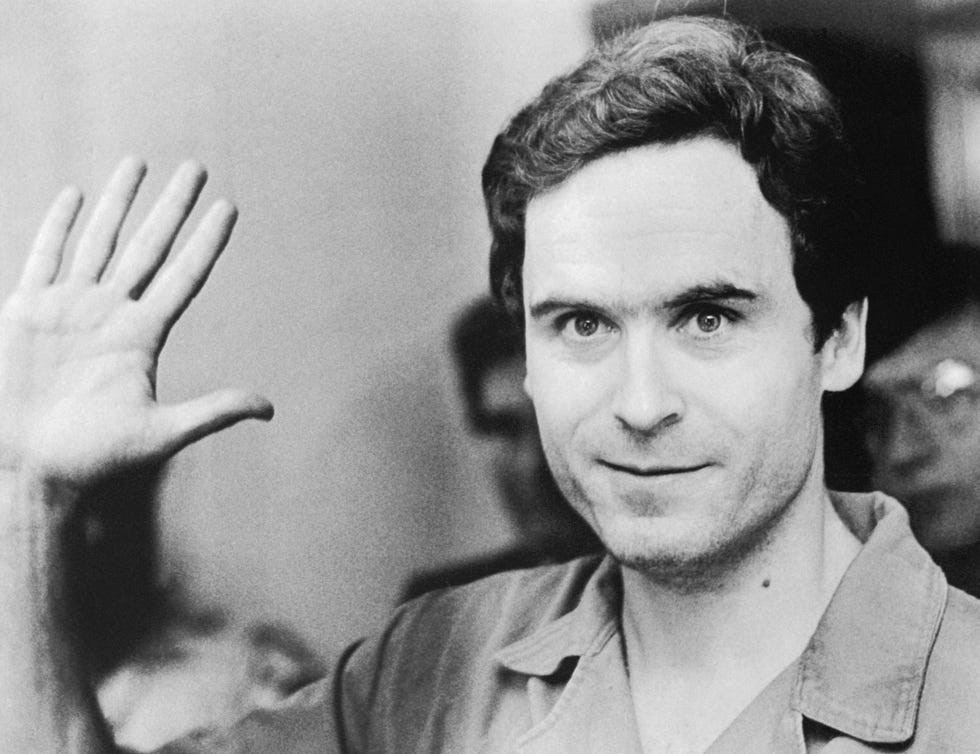
Reading indictment. Ted Bundy in front of the press ”I plead not guilty right now.”


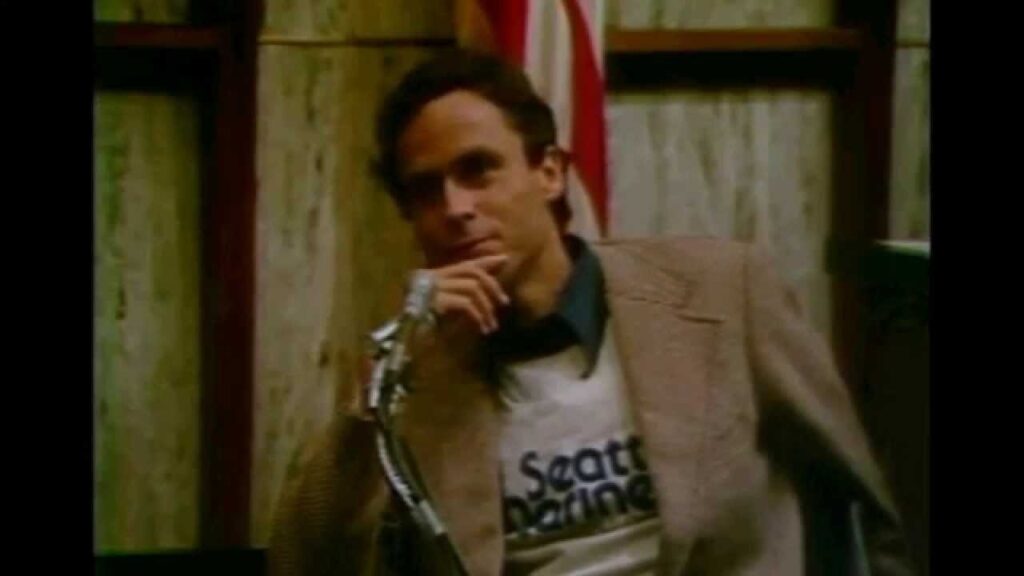
This was a fatal mistake. After all, he was in Florida now, and he was facing a death sentence. In a bizarre move Bundy rejected a plea bargain that would have him plead guilty in return for a 75-year prison sentence instead he chose to go on trial. For the first time teeth impression was used as evidence on this trial. Forensic odontologist Dr. Richard Souviron testified at the first trial along with a display board. On the board was a photo of the bite marks on Levy. He put a transparent sheet, which showed Bundy’s teeth impression, on top of that photo and stated, ”They line up exactly!” He even testified within a reasonable degree of certainty that the suspect’s teeth matched the bite mark. However, Dr. Niki Osborne, a forensic research scientist based in New Zealand who studies decision-making and reliability in forensic sciences, says such a statement is impossible.
The jury deliberated for less than seven hours before convicting him on July 24, 1979 of the murders of Margaret Bowman and Lisa Levy. All three counts of attempted first-degree murder of Kathy Kleiner, Karen Chandler and Cheryl Thomas as well as two counts of burglary. Trial Judge Edward Cowart imposed death sentences for the murder convictions. But Bundy despite knowing he had murdered at least 36 innocent women refused to show any remorse or acknowledge his guilt telling Judge Cowart, “I find it somewhat absurd to ask for mercy for something I did not do. So I will be tortured for and suffer for and receive the pain for the act, but I will not share the burden of guilt.” Judge Cowart then proceeded to sentence Bundy to death by electric chair. Ultimately despite years of appeals, the outcome was inevitable.
In 1980 a second trial took place in Orlando for the abduction and murder of Kimberly Leach. Bundy was again found guilty.
On Feb 9, 1980 during the penalty phase of this trial, Bundy took advantage of an obscure Florida law stating that a marriage declaration made in court, in the presence of a judge constituted a legal marriage. Using this law, Bundy asked Carole Ann Boone to marry him. She was in the court testifying on his behalf. She readily accepted, and Bundy declared to the court that they were legally married. The next day Bundy was sentenced to death by electrocution.
Ted Bundy and Carole Ann Boone. Marriage proposal on trial for murdering 12-year-old Kimberly Leach.

Ted Bundy became infamous. He was in all newspapers. He gave numerous interviews. Many believed in his innocence and courtroom was full of women who adored him. FBI agent, Bill Hagmaier, said that he’s become a standard by which other serial killers are measured. Movie industry have based thrillers, the whole genre on stories like his ”handsome, successful, educated psychopaths who are at the end guilty”…
In 1982 Boone gave birth to a daughter and named Bundy as the father, although physical contact wasn’t allowed, guards were ready to turn a blind eye.
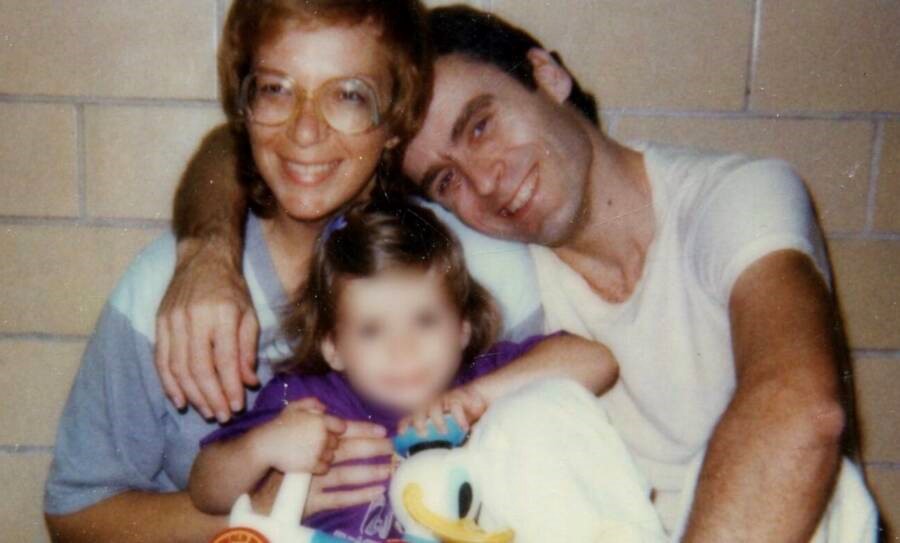
In the aftermath of his convictions, Bundy underwent multiple psychiatric examinations in an attempt to understand what makes a man commit such vile acts. But even the experts had a tough time trying to unravel the complex mind of Ted Bundy.
On July 2, 1986 Bundy is 15 minutes from being executed when he obtains a stay of execution. Another attempt is made in November that same year. In a feeble attempt to try and earn another stay of execution, Bundy offers to reveal details of the murders he hadn’t been convicted of. He gave details of the murders of Caryn Campbell and Julie Cunningham. Although initially, he refused to discuss Denise Oliverson, in total he confessed to 30 homicides over seven states between 1974 and 1978.
As he was being led to the electric chair, he admitted to the murder of Denise. But in a slap in the face to the families of his many other victims, he neither admitted or revealed where the missing remains were. The true victim count is almost certainly much higher.
Theodore Robert Bundy was executed at 7:16 a.m. on January 24, 1989.
FBI agent, Bill Hagmaier, said: ”Ted bundy was caught in large part because he was a terrible driver and an alert police officer in Pensacola picked him up, he was convicted in large part because of forensic odontology, he rarely left any forensic evidence at his crime scenes because he knew what police were looking for, he didn’t know that the science of forensic odontology advanced to the point where a forensic odontologist can testify.”
Ted Bundy spent his last hours with Dr. Dobson, Evangelical Christian, who was a moral crusader focused on family values, who blamed pornography and slasher movies for violence and destruction of family. Many journalists wanted interview with Bundy, however he chose Dr. Dobson, who was also a psychologist. He confessed his crimes, but without any detail. He actually said that he was an addict and that addiction was a hard core pornography. He had diagnosed himself with addictive personality disorder or a porn addict.
According to his words something made him vulnerable and in conjunction with alcohol, his inhibitions decreased, so he started thinking to maybe act out fantasies and he was drunk during most of his crimes. He also emphasized many times that his moral values were intact afterwards. He protected his family and that is really rare for a psychopaths. His listener understood him, not challenging anything Bundy said, so probably the reason for giving his last interview to Dr. Dobson wasn’t his belief in Christ.
- Dorothy O. Lewis, MD, a psychiatrist from the New York University medical center who specializes in evaluating violent offenders. She actually tried to save Bundy from death row with the argument being that he suffered from bipolar disorder and that he shouldn’t be in jail because of that.
- In 1989, the night before his execution, in the interview with Dr. Dobson, he had diagnosed himself with addictive personality disorder or a porn addict.
- Some research that was done at the University of Kentucky, which was the largest research project on Ted Bundy. So according to these clinical and forensic psychologists and psychiatrists, the one of the leads was named Dr. Darrel B. Turner. Ted Bundy is basically ‘’textbook definition of a prototypical psychopath’’. 95% of them believed that Ted Bundy also showed signs of narcissistic personality disorder (NPD). The majority said that Bundy was above the diagnostic thresholds for a borderline. People with borderline tend to feel emotions intensely which may be why not all of the psychologists and psychiatrists felt that Bundy fell into this category of mental health illness. More than 50% of them labeled Bundy as having schizoid personality disorder (SPD). The majority of them agreed that he had antisocial personality disorder. Nearly 80% percent believe that Bundy was a perfect example of the disorder checking off all of the DSM criteria at the time. Psychopathy is not in the DSM.
- Dr. Park Dietz said that Ted Bundy had been a sexual sadist and necrophile and that it is a quite rare to find them both in an individual.
- During the psychiatry podcast called ‘’Ted Bundy: The dark triad’’, several experts that were on this podcast, who are medical experts and psychology experts, were commented that he had the dark triad.
- His defense lawyer tended to delay his execution by bringing Bundy’s confession to his psychologist that his grandfather abused him.
- One thing is sure. Ted Bundy was a psychopath and he had paraphilic disorders: sexual sadism and necrophilia. He probably had some of the above mentioned conditions or strong traits. He was born differently wired and environment did the rest. All in all, he was very disturbed individual.

